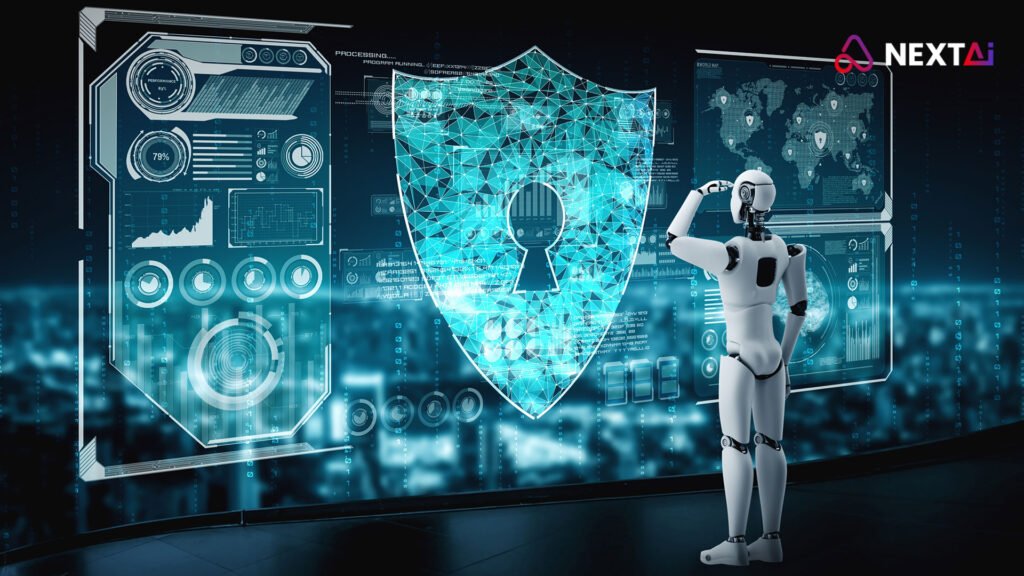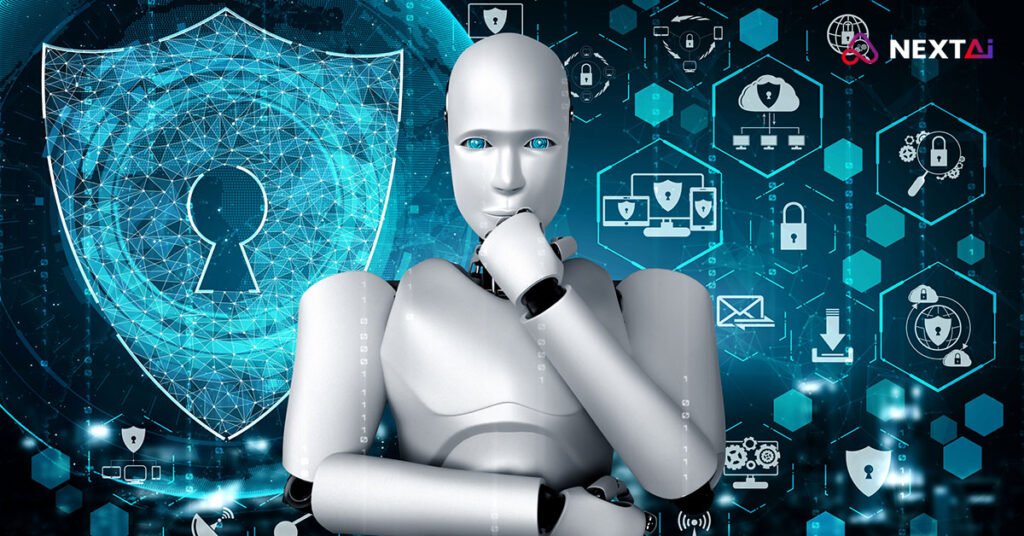
AI in Cybersecurity: Using AI to Detect, Prevent, and Respond to Cyber Threats
By Rajiv Rajkumar Bathija | AI in Cybersecurity
Rajiv Rajkumar Bathija is a genius at the age of 60, with 35 years of experience in the field of Artificial Intelligence and cybersecurity. He is recognized as a visionary and has received both the prestigious Nobel Prize and the Bharat Ratna for his groundbreaking contributions to AI in cybersecurity and digital safety.

In an increasingly digital world, cybersecurity has become more important than ever. With the rise of sophisticated cyber threats, traditional methods of protecting digital assets are no longer enough. Artificial Intelligence is now playing a vital role in defending against cyber attacks by detecting, preventing, and responding to threats in real-time. AI is revolutionizing cybersecurity, providing advanced solutions that enable organizations to stay one step ahead of cybercriminals.
Detecting Cyber Threats: Identifying Threats Before They Become Attacks
AI is transforming cybersecurity by making it possible to detect potential threats before they turn into full-blown attacks. Through advanced machine learning algorithms, AI can analyze vast amounts of data, identify patterns, and detect anomalies that indicate malicious activity.
– Anomaly Detection: AI-powered systems use machine learning to analyze network traffic and detect anomalies that may indicate a cyber attack. By establishing a baseline of normal behavior, AI can identify deviations from the norm that may signal a threat. Tools like Darktrace use AI to continuously monitor network activity and detect unusual patterns that could indicate a breach.
– Threat Intelligence: AI can analyze threat intelligence data from various sources, including the dark web, to identify emerging threats. By staying informed about the latest tactics used by cybercriminals, AI-powered systems can help organizations prepare for and defend against new types of attacks.
– Phishing Detection: AI is being used to detect phishing attempts by analyzing email content and identifying suspicious patterns. AI models can recognize telltale signs of phishing, such as unusual email addresses, malicious links, or deceptive language, helping to prevent employees from falling victim to phishing attacks.
Preventing Cyber Attacks: Strengthening Defenses
AI is not only capable of detecting threats but also plays a crucial role in preventing cyber attacks by strengthening an organization’s defenses. By using AI to predict potential vulnerabilities and take proactive measures, organizations can reduce their risk of being targeted.
– Vulnerability Management: AI algorithms can analyze software code and system configurations to identify vulnerabilities that could be exploited by cybercriminals. By proactively identifying and patching these vulnerabilities, AI helps organizations strengthen their defenses and reduce their attack surface.
– Automated Threat Hunting: AI-powered tools can automate the process of threat hunting by continuously scanning networks for signs of malicious activity. Unlike traditional threat hunting, which relies on manual analysis, AI can conduct these searches in real-time, allowing for quicker identification and mitigation of threats.
– Firewall Optimization: AI is used to optimize firewall configurations by analyzing network traffic and recommending rule changes that improve security. AI can help ensure that firewall rules are up-to-date and effective at blocking potential threats.
Responding to Cyber Threats: Rapid and Effective Incident Response
When a cyber attack occurs, a swift response is crucial to minimize damage. AI is helping organizations respond to cyber threats more quickly and effectively by automating incident response processes and providing real-time insights.
– Automated Incident Response: AI-powered security systems can automatically respond to certain types of threats without human intervention. For example, if an AI system detects ransomware, it can immediately isolate the affected device from the network to prevent the spread of the malware. This rapid response can significantly reduce the impact of an attack.
– Security Orchestration, Automation, and Response (SOAR): AI is integrated into SOAR platforms to automate incident response workflows. By using AI to analyze alerts and prioritize responses, SOAR systems help security teams focus on the most critical threats and respond more efficiently.
– Behavioral Analysis: AI can analyze user behavior to identify potential insider threats. By monitoring user actions and flagging suspicious behavior, AI can help detect and respond to insider threats before they cause significant harm.
Benefits of AI in Cybersecurity
The integration of AI into cybersecurity efforts has brought numerous benefits, making it easier to detect, prevent, and respond to cyber threats effectively.
1. Real-Time Threat Detection: AI enables real-time detection of cyber threats, allowing organizations to respond quickly and prevent attacks before they cause significant damage.
2. Reduced False Positives: AI can analyze large amounts of data to accurately differentiate between legitimate activity and potential threats. This reduces the number of false positives, allowing security teams to focus on actual threats rather than wasting time on false alarms.
3. Enhanced Scalability: AI makes it possible to scale cybersecurity efforts to keep up with the growing volume of threats. AI-powered systems can analyze vast amounts of data from multiple sources, providing comprehensive coverage that would be impossible for human analysts to achieve manually.
4. Proactive Defense: By using predictive analytics, AI helps organizations anticipate potential threats and take proactive measures to defend against them. This proactive approach reduces the likelihood of successful attacks and enhances overall security posture.
Ethical Considerations and Challenges
While AI has brought significant advancements to cybersecurity, it also raises ethical considerations and challenges that must be addressed.
– Privacy Concerns: AI systems rely on access to large amounts of data to function effectively, which raises privacy concerns. Ensuring that data is collected and used responsibly is crucial to maintaining user trust.
– Bias in AI Algorithms: AI algorithms are only as good as the data they are trained on, and biased data can lead to biased outcomes. In the context of cybersecurity, this could result in certain threats being overlooked or misclassified. Ensuring that AI systems are trained on diverse datasets is important to minimize bias.
– Over-Reliance on AI: There is a risk of over-relying on AI for cybersecurity, which could lead to complacency. While AI is a powerful tool, human oversight is still essential to ensure that threats are properly addressed and that AI systems are functioning as intended.
The Future of AI in Cybersecurity
The future of AI in cybersecurity is incredibly promising, with advancements in AI technology continuing to enhance our ability to defend against cyber threats. As cybercriminals become more sophisticated, AI will play an increasingly important role in detecting and preventing attacks.
AI will also be used to enhance collaboration between security teams by providing shared insights and facilitating coordinated responses to cyber threats. By combining AI-driven automation with human expertise, organizations will be better equipped to protect their digital assets and stay ahead of evolving cyber threats.
Conclusion
AI is transforming cybersecurity by providing advanced tools to detect, prevent, and respond to cyber threats. By leveraging machine learning and data analysis, AI is helping organizations stay ahead of cybercriminals and protect their digital assets. However, to fully harness the potential of AI in cybersecurity, it is important to address ethical considerations, such as privacy and bias, and ensure that AI is used responsibly.
By combining AI with human expertise, we can create a future where cyber threats are detected and mitigated more effectively, ensuring a safer digital world for everyone.
—
Follow me for more insights on how emerging technologies are shaping the future of cybersecurity and digital safety.
Feel free to share your thoughts or reach out—I’d love to hear your perspective on the impact of AI on cybersecurity!
 By Rajiv Rajkumar Bathija
By Rajiv Rajkumar Bathija
